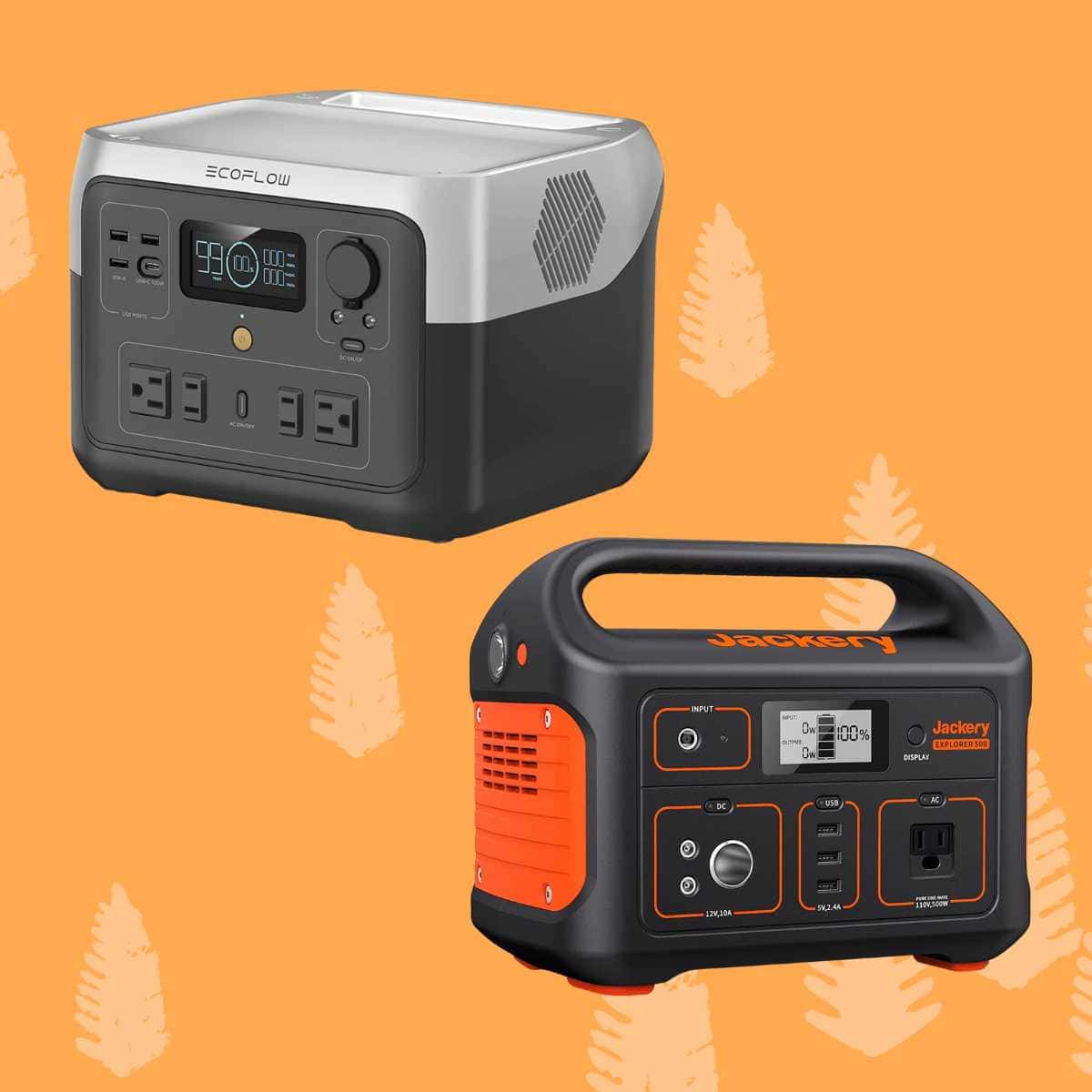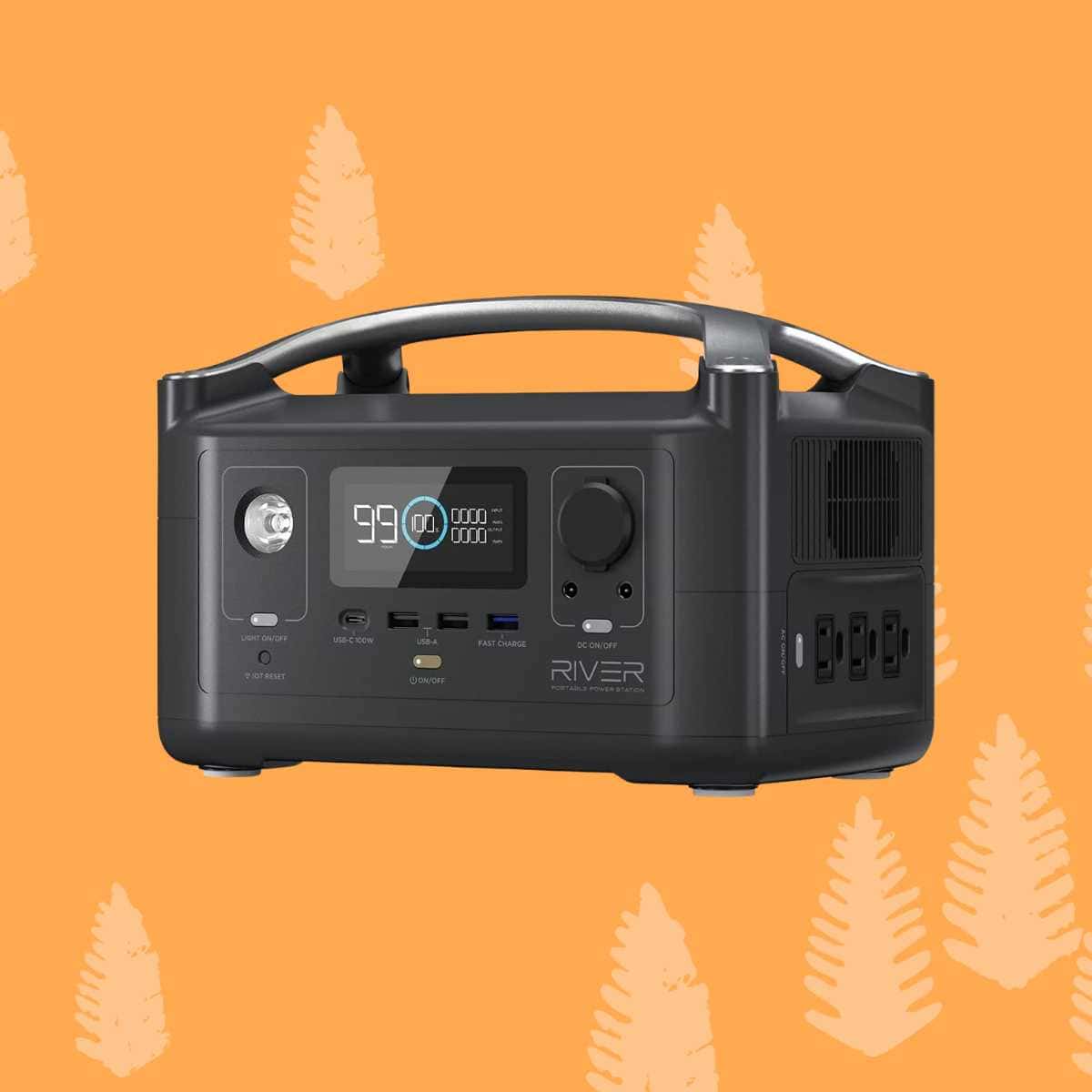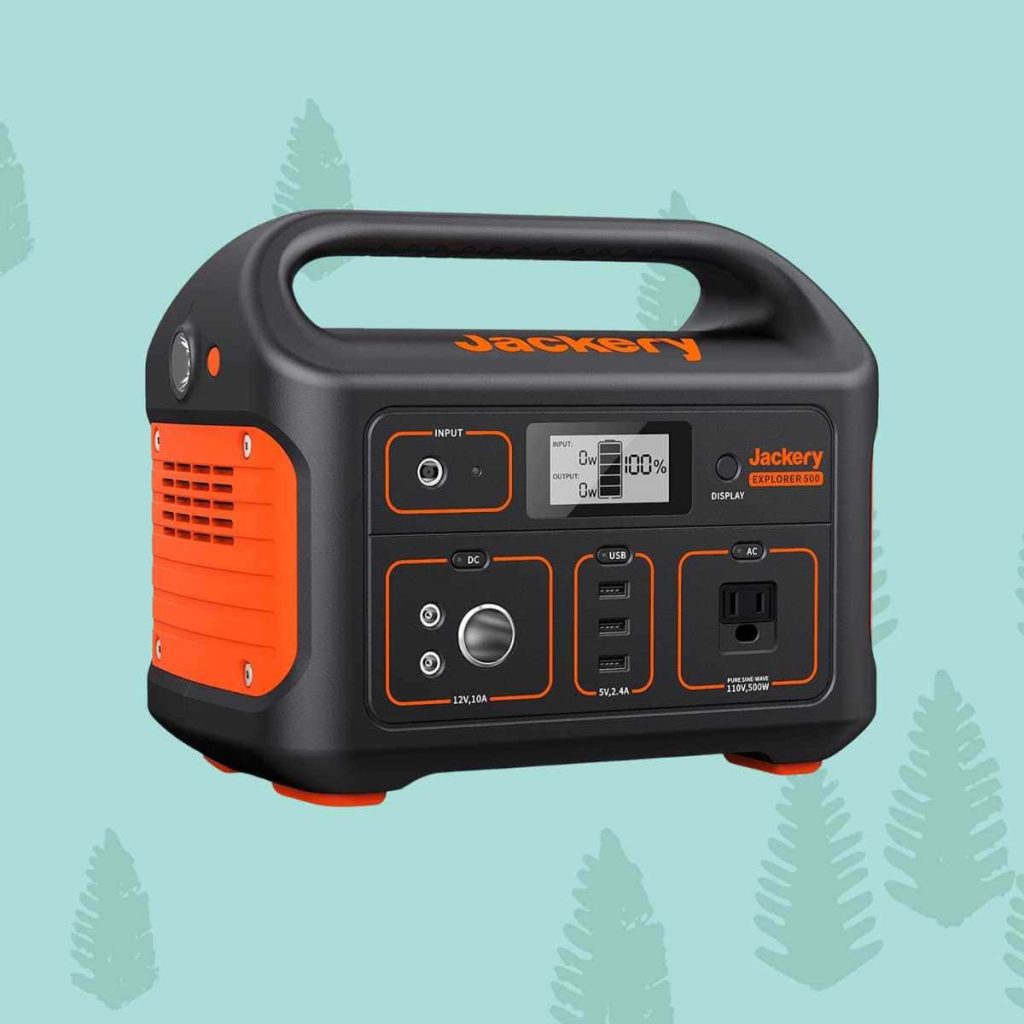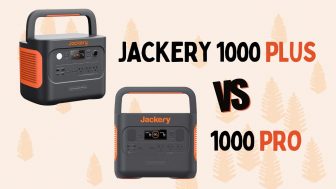EcoFlow RIVER
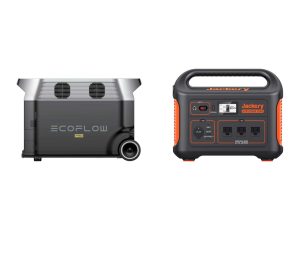
The EcoFlow River 2 is a compact portable power station that features expandable storage capacity of 288Wh up to 576Wh, fast recharging in under 90 minutes, a LiFePO4 lithium battery, and 10 output ports to plug into.
Product Brand: EcoFlow
4.47
Pros
- Expandable capacity from 288Wh to 576Wh
- Fast recharging in 90 minutes
- Powerful 600W output with 1200W peak surge
Cons
- Not Bluetooth enabled
- 11lbs weight is heavier that similar power stations of this size
Jackery EXPLORER 300 Plus

The Jackery EXPLORER 300 Plus is a lightweight portable power station that features a LiFePO4 lithium battery, long lasting charge cycles, Bluetooth and WiFi capability.
Product Brand: Jackery
4.2
Pros
- LiFePO4 lithium battery
- 3,000 charge cycles
- 2 hour recharge using AC wall outlet
- Compact design that weighs less than 10lbs
- Bluetooth and WiFi enabled
Cons
- Limited outputs with only 1 AC outlet, 1 USB-A, 2 USB-C and 1 DC port
- Less output power, with 300W continuous AC output
- Solar and DC charging takes longer that similar models of this size
EcoFlow Delta 2

The EcoFlow Delta 2 portable power station features expandable battery capacity from 1kWh to 3kWh, LiFePO4 lithium technology, 15 different outlets and ports, and super fast recharge within 80 minutes.
Product Brand: EcoFlow
4.5
Pros
- Expandable battery capacity
- LiFePO4 lithium battery
- 90 minute recharge to 100%
- 15 output ports
- Bluetooth and WiFi capability
- App remote control
Cons
- Heavy at 27lbs
- Less battery capacity than similar models
Jackery EXPLORER 1000 Plus

The Jackery Explorer 1000 Plus portable power station provides expandable battery capacity, starting at 1264Wh up to 5000Wh, 4,000 charge cycles, LiFePO4 technology and fast recharging within 2 hours.
4.6
Pros
- Long lasting battery with 4,000 charge cycles
- Expandable capacity to 5kWh
- Fast AC recharge
- Powerful output, with 2000W and 4000W surge
Cons
- Less output ports than similar models
- Heavy at 32lbs
- DC charging takes 7 hours or more
EcoFlow RIVER 2 Max

The EcoFlow River 2 Max delivers 512Wh capacity, and features 11 outputs, including AC, USB, and a 12V port. The station features advanced LiFePO4 battery technology for safety and longevity, and supports 1 hour recharging via AC wall outlet, and 3 hours via solar.
Product Brand: EcoFlow
4.5
Pros
- 3,000 cycles to 80%+
- Fast 1 hour recharge via AC outlet
- Powerful 660W AC output with 1,000W surge
- Large selection of outputs, with 11 ports to plug into
- 5 year warranty
Cons
- Battery is not expandable
Jackery EXPLORER 500

The Jackery Explorer 500 portable power station has 518Wh battery capacity, multiple output options, including a pure sine wave AC outlet, USB-A ports, and a 12V car output. Its durable build and easy-to-carry handle make it a practical choice for camping, road trips, or as a backup power source.
Product Brand: Jackery
3
Pros
- Powerful output, with 500W AC and 1,000W surge power
- Rugged build, tested for drops and falls
- Ergonomic design with foldable carry handle
Cons
- Short life span with only 500 charge cycles
- Long recharging time that ranges from 7.5 to 9.5 hours
- Only provides 1 AC outlet
- No Bluetooth or WiFi feature
- No App control
EcoFlow DELTA 2 Max

The EcoFlow DELTA 2 Max is a powerful and portable power station with a 2048Wh LiFePO4 battery, ensuring long-lasting performance. It offers a range of outputs including AC outlets, USB ports, and a 12V car port, catering to various power needs. The station supports rapid and dual charging through multiple methods such as wall outlets, solar panels, and car chargers.
Product Brand: EcoFlow
4.7
Pros
- Features UPS mode for a seamless transition during power outages
- Powerful output, with 2400W continuous AC output and 4800W peak surge
- Recharges in 2 hours or less using AC or solar
- 3,000 charge cycles
- 15 outlets and ports to plug into
Cons
- DC charging takes anywhere from 11 to 21 hours
- 48lbs weight is on the heavier side compared to similar models
Jackery EXPLORER 2000 Pro

The Jackery Explorer 2000 PRO delivers 2160Wh of storage capacity, multiple output ports to plug into, including three AC outlets, USB-A and USB-C ports, and a 12V car socket, and fast recharging with 2 to 4 hours by AC or solar.
Product Brand: Jackery
3.5
Pros
- Fast, 2 hour AC recharging
- Powerful 2200 output with 4400W peak surge
Cons
- Li-ion NMC battery can only support about 1,000 charge cycles
- No Bluetooth or WiFi capability
- Battery capacity is not expandable


